Jupiter has captivated astronomers for over four centuries since its discovery through the earliest telescopes. This magnificent celestial body is a massive gas giant with mesmerizing swirling clouds, an enigmatic sunspot, a diverse family of satellites, and a plethora of distinctive features.
However, perhaps the most awe-inspiring aspect of Jupiter is its sheer scale. In terms of mass, volume, and surface area, this planet reigns supreme as the largest in our solar system. Its existence has been recognized and revered by ancient civilizations, making Jupiter a prominent figure in numerous cultures throughout history.
Curious details about Jupiter
Jupiter is the fourth most luminous planet in our solar system.
- When it comes to brightness, only the Sun, Moon, and Venus surpass Jupiter. It is one of the top five planets that can be observed without any instruments.
The earliest mentions of Jupiter date back to the Babylonians.
- References to Jupiter can be traced as far back as the 7th-8th centuries BC. It was named after the supreme deity in the Greek pantheon, Zeus. In Mesopotamia, it was known as Marduk, and among the Germanic tribes, it was called Thor.
Jupiter has the shortest day of any planet.
- It completes one full rotation on its axis in just 9 hours and 55 minutes. This rapid rotation results in a flattened shape at the poles and an expanded equatorial line.
One Jupiter year lasts for approximately 11.8 Earth years.
Jupiter is known for its notable cloud formations.
- The upper layer of Jupiter’s atmosphere is divided into different cloud belts and zones, composed of crystals made of ammonia, sulfur, and their mixture.
One of the most prominent features of Jupiter is its massive storm known as the Great Red Spot.
- The Great Red Spot is a gigantic storm that has been continuously raging for over 350 years. It is so large that it could easily engulf three Earth-sized planets.
Jupiter’s structure is primarily composed of rock, metal, and hydrogen compounds.
- Beneath its atmospheric layer, Jupiter consists of layers of gaseous and liquid hydrogen, as well as a solid core made of ice, rock, and metals.
Ganymede, one of Jupiter’s moons, is the largest satellite in the entire solar system.
- Ganymede, Callisto, Io, and Europa are the largest satellites among Jupiter’s many moons. Ganymede, with a diameter of 5268 km, is even larger than Mercury.
Jupiter also has a ring system
- The rings around Jupiter are thin and composed of dust particles that are ejected by the moons during collisions with comets or asteroids. These rings start at a distance of 92000 km from Jupiter and extend 225000 km. The thickness of the rings ranges from 2000 to 12500 kilometers.
Several missions have been sent to explore Jupiter
- These missions include the Pioneers 10 and 11, Voyagers 1 and 2, Galileo, Cassini, Willis, and New Horizons spacecraft. Future missions may focus on studying Jupiter’s satellites in more detail.
Size, mass, and orbit of Jupiter
Jupiter, the largest planet in our solar system, boasts impressive dimensions. It has a mass of 1.8981 x 1027 kg and a volume of 1.43128 x 1015 km3. With a surface area of 6.1419 x 1010 km2 and an average circumference of 4.39264 x 105 km, Jupiter is truly a behemoth. To put it into perspective, the planet’s diameter is 11 times larger than Earth’s, and it is 2.5 times more massive than all of the other planets in our solar system combined.
Characteristics of Jupiter’s Physical Appearance
Jupiter is classified as a gas giant, making its density significantly lower than that of Earth. With a density of 1.326 g/cm3, it is less than a quarter of Earth’s density. This low density provides researchers with valuable information about the planet’s composition, although there is still ongoing debate regarding the specific makeup of its core.
On average, Jupiter is located approximately 778,299,000 km away from the Sun. However, it is important to note that this distance can vary, ranging from 740,550,000 km to 816,040,000 km. Furthermore, Jupiter has an orbital period of 11.8618 years, meaning that one complete orbit around the Sun takes approximately 4332.59 days to complete.
Jupiter’s orbit and rotation [ ]
However, Jupiter boasts one of the swiftest axial rotations, completing a full revolution in just 9 hours, 55 minutes, and 30 seconds. As a result, its year lasts 10475.8 solar days.
The composition and surface of the planet Jupiter [ ]
Jupiter consists primarily of gaseous and liquid matter, making it the largest of the gas giants. It is comprised of an outer atmospheric layer and an inner core.
The atmosphere is primarily composed of hydrogen (88-92%) and helium (8-12%). Additionally, traces of methane, water vapor, silicon, ammonia, and benzene can be observed. Small amounts of hydrogen sulfide, carbon, neon, ethane, oxygen, sulfur, and phosphine are also present.
The composition of the interior of Jupiter is mainly comprised of hydrogen (71%), helium (24%), and various other elements (5%). This dense mixture gives rise to a core consisting of liquid metallic hydrogen, along with helium and an outer layer of molecular hydrogen. While it is believed that there may be a rocky core, precise data on its existence is currently unavailable.
In 1997, the possibility of a core in Jupiter was discussed after gravitational calculations indicated that it could potentially have a mass ranging from 12 to 45 times that of Earth, accounting for 4 to 14% of Jupiter’s total mass. The presence of a core is also supported by planetary models, which suggest that rocky or icy cores are necessary for the formation of gas giants. However, factors such as convection currents and the presence of glowing liquid hydrogen may have led to a reduction in the size of the core.
The temperatures and pressures increase as we get closer to the core. At the surface, we can expect to see temperatures of 67°C and pressures of 10 bar. At the phase transition, temperatures rise to 9700°C and pressures reach 200 GPa. Near the core, temperatures can reach as high as 35700°C, with pressures ranging from 3000-4500 GPa.
Jupiter’s Satellites
Recent discoveries have revealed that Jupiter has a family of 67 satellites orbiting around it. The largest satellites, known as the Galilean satellites, were named after Galileo Galilei, who first observed them. These include Io, which has active volcanoes on its solid surface, Europa, which boasts a massive subsurface ocean, Ganymede, the largest satellite in the system, and Callisto, which also has a subsurface ocean and is covered in ancient surface materials.
In addition to the Galilean satellites, there is also a group called the Amalthea group. This group consists of four smaller satellites with diameters less than 200 km. They are located approximately 200,000 km away from Jupiter and have an orbital inclination of 0.5 degrees. The satellites in this group are named Metis, Adrastea, Amalthea, and Phoebe.
There are also a multitude of irregular moons that are smaller in size and have more elliptical orbits. They can be grouped into families that share similarities in terms of size, composition, and orbit.
Jupiter’s Atmosphere and Temperature
One can observe the familiar auroras at the north and south poles of Jupiter. However, these auroras are much more intense and rarely subside. This spectacular display is influenced by Jupiter’s strong radiation, magnetic field, and the volcanic activity on its moon Io.
Jupiter also experiences remarkable weather conditions. Winds can reach speeds of 100 m/s and even accelerate up to 620 km/h. Within a matter of hours, large-scale storms can emerge, spanning thousands of kilometers in diameter. The Great Red Spot, which was first observed in the 1600s, is still active but gradually shrinking in size.
The planet is concealed by clouds consisting of ammonia and ammonium hydrosulfate, which are situated in the tropopause and are referred to as tropical regions. This layer can stretch for up to 50 kilometers. Additionally, there might be a layer of aqueous clouds, indicated by lightning flashes that are a thousand times more intense than our own.
The origin story of the giant planet Jupiter
Due to its immense size, the planet Jupiter has been visible in the sky without the aid of instruments for centuries, making its existence known for a long time. The earliest mentions of Jupiter can be traced back to ancient Babylon in the 7th or 8th century BC. During the 2nd century, Ptolemy developed a geocentric model which calculated the orbital period of Jupiter to be approximately 4332.38 days. Building upon this model, mathematician Aryabhata, in 499, arrived at a slightly different result of 4332.2722 days.
In 1610, Galileo Galilei revolutionized our understanding of Jupiter by observing it through his telescope for the first time. During his observations, Galileo also discovered the presence of four large satellites orbiting the gas giant. This groundbreaking discovery provided strong evidence in support of the heliocentric model of the solar system.
Cassini utilized a new telescope during the 1660s to investigate the patterns and prominent bands on the planet. This exploration led to the revelation that the planet had a flattened spheroid shape. In 1690, Cassini further determined the duration of the planet’s rotation and the differential rotation of its atmosphere. The intricate features of the Great Red Spot were initially illustrated by Heinrich Schwabe in 1831.
E. E. Bernard observed the fifth moon in 1892, which was called Almathea. This discovery marked the final satellite to be identified through visual observation. Rupert Wildt conducted a study on the absorption bands of ammonia and methane in 1932, and in 1938, he tracked the existence of three long-lasting “white ovals.” These formations remained separate for many years, but in 1998, two of them merged into a single entity and absorbed the third in 2000.
Surveying with radio telescopes was initiated in the 1950s, and the initial detection of signals occurred in 1955. These signals were radio wave bursts that corresponded to the rotation of planets, providing a means to calculate their velocity.
Subsequently, scientists were able to identify three distinct types of signals: decametric, decimeter, and thermal emissions. The decametric signals vary with planetary rotation and are influenced by Io’s interaction with the planet’s magnetic field. Decimeter signals originate from the torus-shaped equatorial belt and result from cyclonic emissions of electrons. The thermal emissions, on the other hand, are generated by atmospheric heat.
Jupiter – Jupiter is the fifth planet from the Sun and the largest planet in our Solar System. It has been known since ancient times and is named after the Roman god Jupiter, who is equivalent to the Greek god Zeus. Jupiter falls into the category
Physical Characteristics [ ]
Planetary Parameters [ ]
Jupiter, the largest planet in our solar system, has a equatorial radius of 71.4 thousand kilometers, which is approximately 11.2 times the radius of Earth. When viewed through a telescope with 40x magnification, Jupiter appears about the same size as the Moon seen with the naked eye.
With a mass over twice that of all the other planets combined, Jupiter is 318 times the mass of Earth and only about 1000 times less massive than the Sun. If Jupiter were about 70 times more massive, it could have become a star. Jupiter’s density is similar to that of the Sun, but much lower than that of Earth.
Due to the equatorial plane of the planet being close to the plane of its orbit, Jupiter does not experience seasonal changes like Earth does.
Jupiter revolves around its axis, not as a solid object, but with the angular velocity of its rotation decreasing from the equator to the poles. A day on Jupiter’s equator lasts approximately 9 hours and 50 minutes. Among all the planets in our solar system, Jupiter has the fastest rotation. This rapid rotation results in a noticeable polar compression, with the polar radius being 4.6 thousand kilometers smaller than the equatorial radius (which is equivalent to a 6.5% difference).
When observing Jupiter, we can only see its upper atmosphere filled with clouds. This giant planet is primarily composed of gas and lacks the solid surface we are accustomed to.
Jupiter emits 2-3 times more energy than it receives from the Sun. This phenomenon can be attributed to various factors, such as the gradual compression of the planet, the sinking of helium and heavier elements, or the processes of radioactive decay occurring within the planet’s interior.
Internal Structure [ ]
Jupiter is primarily composed of hydrogen and helium. Below the clouds, there exists a region that spans a depth of 7-25 thousand kilometers where hydrogen undergoes a gradual transition from a gaseous state to a liquid state as pressure and temperature increase (reaching up to 6000°C). The boundary between gaseous hydrogen and liquid hydrogen appears to be indistinct, resembling a continuous boiling of hydrogen on a global scale.
Beneath the layer of liquid hydrogen lies a layer of metallic hydrogen, estimated to have a thickness of approximately 30-50 thousand kilometers based on theoretical models. Metallic hydrogen forms under pressures of several million atmospheres. Within this layer, protons and electrons exist separately, creating an environment that exhibits excellent electrical conductivity. The powerful electric currents generated within the layer of metallic hydrogen contribute to the formation of Jupiter’s immense magnetic field.
It is theorized by scientists that Jupiter houses a central region composed of elements that are more dense than helium. The core measures around 15-30 thousand kilometers in diameter and boasts a significant density. Theoretical calculations suggest that the temperature within Jupiter’s core reaches approximately 30,000°C, while the pressure ranges from 30 to 100 million atmospheres.
Atmosphere [ ]
The reddish color variations observed on Jupiter may be caused by the presence of phosphorus, sulfur, and carbon compounds. As a result, the chemical composition of the atmosphere varies depending on the location, leading to significant differences in color. This is evident in the existence of both “dry” and “wet” regions with varying levels of water vapor content.
The temperature of the outer layer of clouds on Jupiter is approximately -130 °C, but increases rapidly as you go deeper. Based on data from the descent vehicle, it is believed that the dark belt clouds below are made up of red-brown ammonium hydrosulfide crystals and have higher temperatures. These cloud structures represent areas where air is moving downward. The belts and zones on Jupiter have different speeds in the direction of the planet’s rotation. The length of a day on Jupiter varies by a few minutes depending on the latitude, which results in the presence of steady zonal currents or winds that blow continuously parallel to the equator in the same direction. The velocities in this global system can reach speeds of 50 to 150 m/s and even higher. At the boundaries between the belts and zones, there is intense turbulence, which leads to the formation of many vortex structures. The most well-known vortex on Jupiter is the Great Red Spot, which has been observed on the planet’s surface for the past 300 years.
Within the atmosphere of Jupiter, scientists have observed lightning that is three orders of magnitude more powerful than what is found on Earth, as well as stunning auroras. Furthermore, the Chandra orbiting telescope has discovered an enigmatic source of pulsating X-ray radiation, known as the Great X-ray Spot, the origins of which remain a puzzle.
The Enormous Crimson Spot [ ]
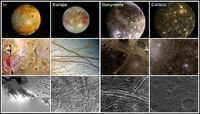
As of December 2005, Jupiter possesses a total of 63 satellites, which is the highest number among all the planets in the solar system. However, it is believed that the actual number of satellites could be even higher, possibly reaching up to a hundred. Among these satellites, the four largest ones were discovered by Galileo Galilei in 1610. One particular satellite of great interest is Europa, as it is known to have a global ocean that may potentially harbor life. All of Jupiter’s large satellites have a synchronous rotation, meaning they always face the planet with the same side due to the strong tidal forces exerted by Jupiter. On the other hand, the smaller satellites have irregular shapes and are composed of rocky materials. Interestingly, some of these smaller satellites have orbits that are in the opposite direction.
In 1979, a satellite passing by Jupiter revealed the presence of faint rings that caused an eclipse of the sun. These rings can only be observed in the infrared spectrum from Earth. The discovery of these rings has provided valuable insights into the nature of Jupiter’s satellites.
The Exploration of Jupiter by Spacecraft
Jupiter’s exploration has been exclusively carried out by spacecrafts from NASA.
In 1973 and 1974, the Galilean satellites made their first measurements of the magnetic field and magnetosphere of Jupiter as they passed by the planet.
In 1979, more satellites flew near Jupiter, gathering valuable data and even discovering the rings of the planet.
Between 1992 and 1995, a spacecraft passed by Jupiter, followed by an orbiter mission from 1995 to 2003. Another spacecraft passed by Jupiter in 2000. On February 28, 2007, while on its way to Pluto, a spacecraft made a close approach to Jupiter. A planned launch of a device in 2010 and a future interplanetary mission in the 2010s aim to study the Galilean satellites further.
Is there Life on Jupiter?
Currently, the chances of finding life on Jupiter are slim due to the low amount of water in its atmosphere and the absence of a solid surface. However, in the 1970s, Carl Sagan speculated about the existence of ammonia-based life forms in the upper atmosphere of Jupiter [1]. It is worth mentioning that even at relatively shallow depths in the Jovian atmosphere, the temperature and density are sufficiently high to potentially support the existence of Comet Shoemaker-Levy [ ].
Fragment from one of the comet’s remnants
References and sources [ ]
In the northwestern part of the sky, a brilliant light shines distinctly after sunset. It stands out prominently amidst the surrounding stars. That luminous object is none other than Jupiter, the largest planet in our solar system.
Despite numerous spacecraft missions, Jupiter still holds many enigmas for scientists. The hidden secrets of Jupiter and its unique characteristics are explored in depth in this article.
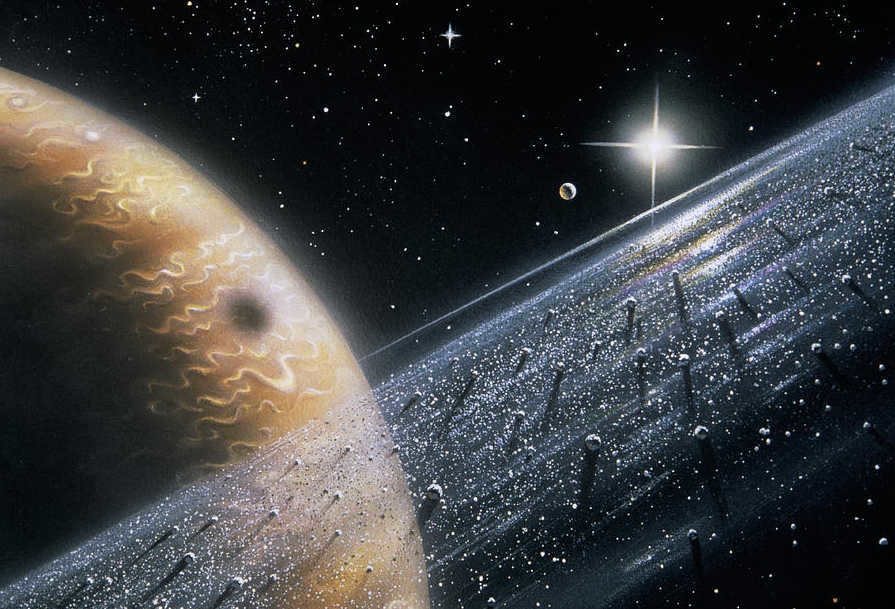
The birth and enormity of the planet
Jupiter is the most colossal celestial body in our solar system. Because of its immense size, the planet emits a more radiant luminosity compared to other celestial objects visible in the darkened heavens.
The weight of Jupiter surpasses the combined weight of all other planets, comets, moons, asteroids, and any other extraterrestrial entities in our solar system by 250%, making up 71.16% of the entire mass of objects in the system.
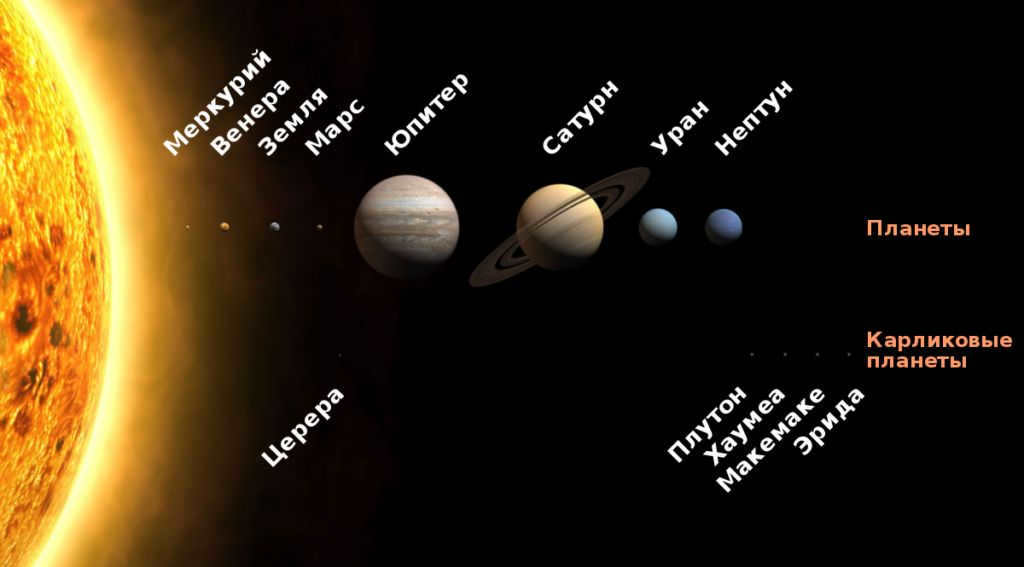
One assumption about these dimensions is that it may have been one of the initial planets in the solar system. As the Sun was forming, a cloud of glowing gas and debris from the interstellar space gave birth to the planets.
It is believed that the young star produced a powerful surge of energy that swept away most of the remnants of the interstellar cloud. However, since Jupiter is situated 778 million kilometers away from the Sun, it managed to retain some of the cloud.
Research on Jupiter supports this theory. The composition of this gas giant shares similarities with other celestial bodies. This resemblance once again suggests that Jupiter originated within the solar system, and its planetary processes demonstrate the synthesis of matter, which contributes to the creation of various planetary objects in the solar system.
Etymology of the planet’s name
Thanks to its remarkable luminosity, the colossal celestial body exhibits exceptional visibility in the vast expanse of the night sky. The astronomical distance between Earth and Jupiter amounts to a staggering 775.55 million kilometers.
Throughout the annals of history, civilizations across the globe have had the privilege of observing celestial entities such as Venus, Saturn, Mars, and Jupiter following dusk. Without regard to cultural, religious, or philosophical differences, our ancestors were captivated by the sheer magnificence of these planets. Even in those ancient times, scholars took note of their distinct movements in relation to the surrounding stars. As they traversed the constellations of the zodiac, they adhered to precise laws and regulations.
Due to these distinctive characteristics, the ancient Greek astronomers bestowed upon these celestial objects the moniker of “wandering stars,” a term that would later be replaced by the designation of “planet.”
It is worth noting the significant role that Jupiter played in ancient cultures. The ancient civilizations, lacking knowledge of the planet’s size and characteristics, gave it a special place among the other celestial bodies.
As a result, the planet was named after the supreme deity of ancient Rome, the king of the heavens and ruler over all other gods. In Greek mythology, Jupiter is equivalent to the thunder god Zeus, and the Greeks referred to the planet as “the star of Zeus”. Jupiter also held importance in various Semitic, Hindu, and Mesopotamian cultures, where it was worshipped in different ways.
However, Venus has surpassed Jupiter as the brightest celestial body. This is due to the different paths these objects take across the sky. Venus, being an inner planet located close to the Sun, can only be seen after sunset as an evening star or before sunrise as a morning star.
Jupiter, on the other hand, is a gas giant and an outer planet. It travels across the sky and is easily visible. Ancient astronomers recognized its “brilliance” and hailed it as the brightest, giving it the esteemed title of the king among the planets.
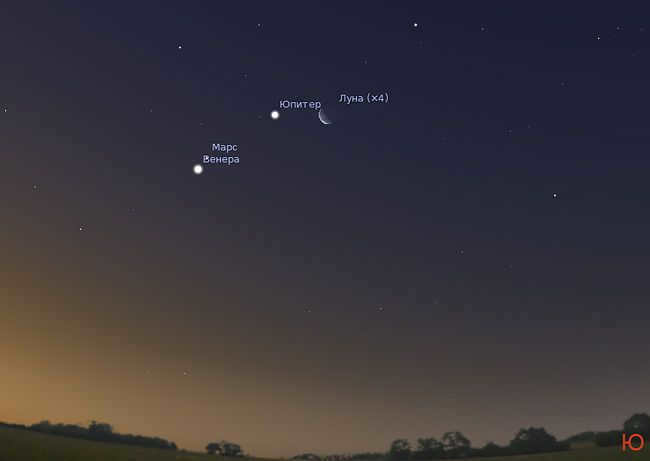
The Moons of Jupiter
As of December 2018, approximately 79 moons have been observed in orbit around Jupiter, making it the planet with the largest number of moons in the solar system.
The total number of moons that Jupiter has is not yet fully known. Each year, new discoveries increase the count. It is estimated that the final number could be as high as one hundred. These moons are often named after mythological heroes or figures from the Greco-Roman pantheon.
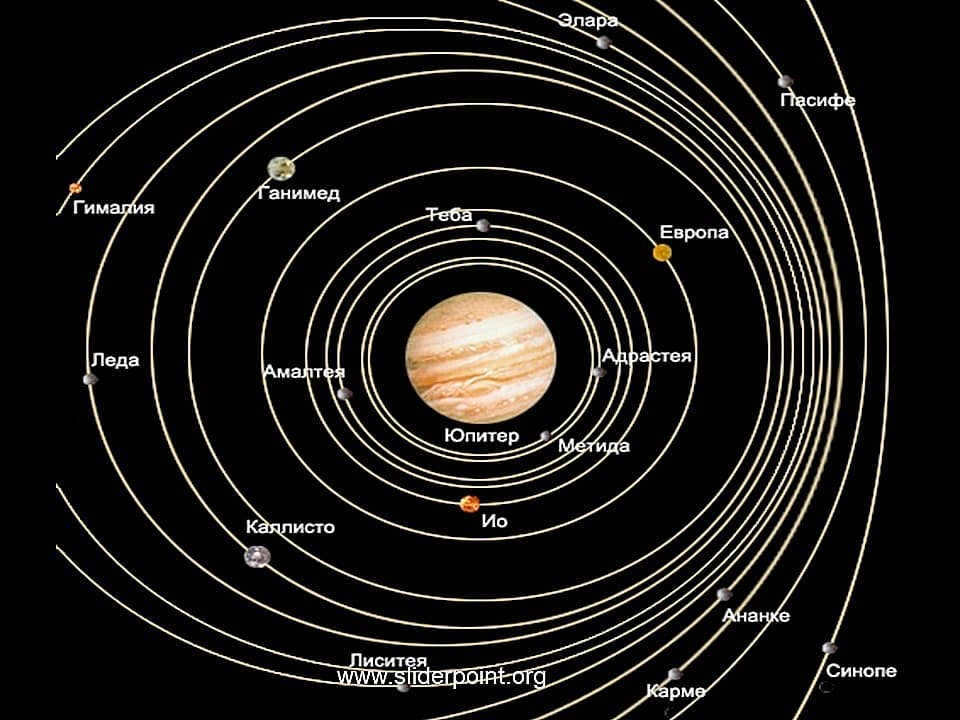
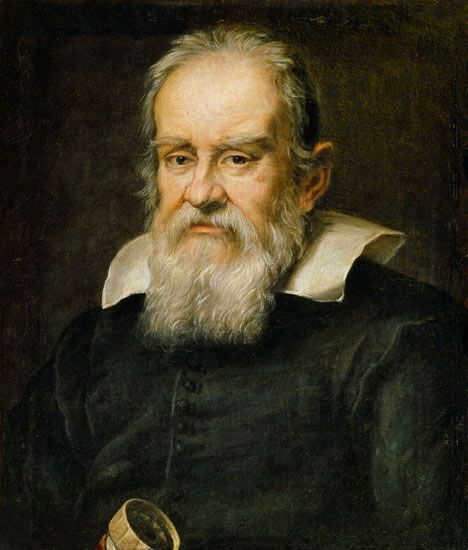
The discovery of Jupiter’s satellites was initially made by the Italian astronomer Galileo Galilei. In the year 1610, he utilized a telescope of his own creation to make this groundbreaking discovery.
Upon observing the celestial body, Galileo was able to identify four distinct points of light with a particular trajectory of movement. These four objects were arranged in a straight line around the planet and their positions relative to the parent body would periodically shift. The scientist accurately described the position and motion of these objects.
The conclusions drawn by Galileo from the apparent motion of the Jupiter system provided evidence against the notion that these objects were moving around the Earth. This theory, which supported Copernicus, contradicted biblical beliefs and led to the church subjecting Galileo’s research to trial by the Inquisition.
The Galilean moons, discovered by Galileo, are the most prominent and sizable satellites of Jupiter compared to the others discovered later. These moons were later named after Zeus’ romantic partners: Io, Europa, Ganymede, and Callisto. They are commonly referred to as the Galilean moons.
However, it took several decades for the number of Jupiter’s satellites to increase, revealing the existence of an additional 75 bodies. This makes Jupiter the planet with the highest number of satellites in the entire solar system.
The Amazing Great Red Spot
Jupiter’s atmosphere is filled with an abundance of mesmerizing swirls and thick clouds. This gas giant has the fastest rotation speed among all the planets in the solar system, completing a full rotation in just 9 hours, 50 minutes, and 30 seconds.
When observing Jupiter through a telescope, one can see numerous formations in the form of spots scattered across its surface, some spanning many kilometers in diameter. These formations are the result of Jupiter’s unique weather patterns.
The most prominent spot on Jupiter is the incredible Great Red Spot (GRS), which was first discovered in 1664. Once again, Jupiter sets a record with this enormous storm system, stretching tens of thousands of kilometers and earning the title of the largest vortex in the entire solar system.
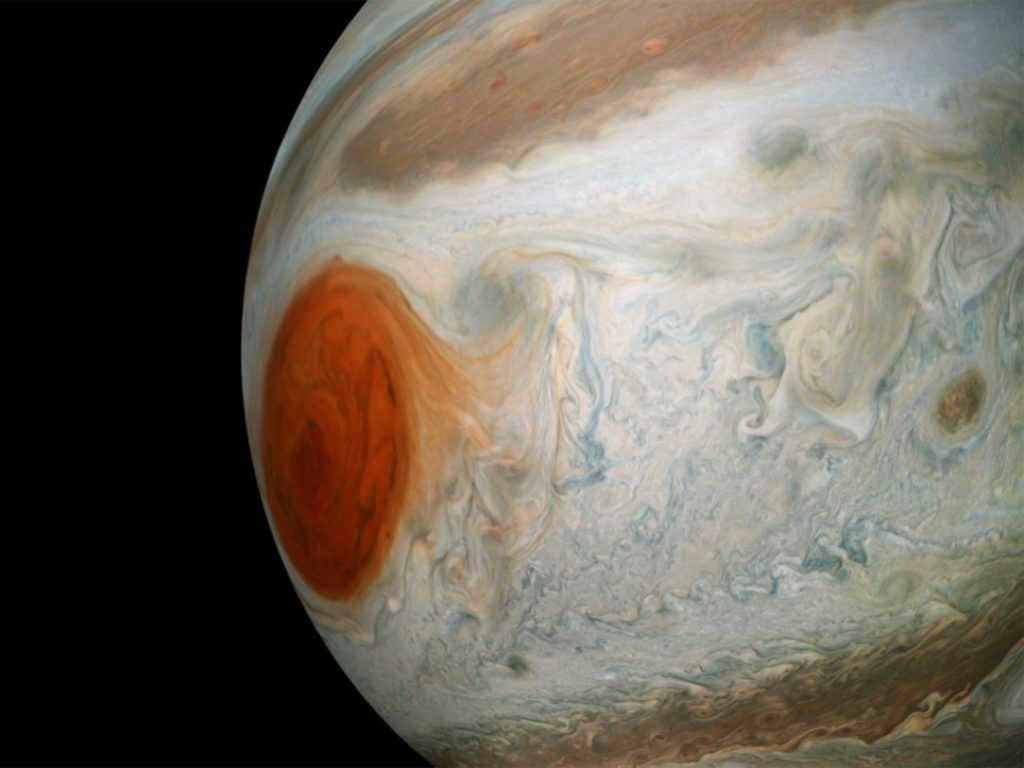
Over the course of many centuries, this enormous atmospheric phenomenon has undergone multiple transformations in terms of its color, shape, and size. Initially, it was believed that the spot had a solid structure. However, through the exploration of the Jupiter system by the Voyager 1 and Voyager 2 spacecraft, scientists have been able to determine the true nature of this storm.
Recent space studies have revealed that the spot is gradually decreasing in size. This process of shrinking began in the 1930s, with the cyclone steadily losing volume over time. Subsequent observations have consistently supported this trend, and at present, the BCS has diminished by 50%.
The Unparalleled Attraction of Jupiter
Out of all the celestial bodies in our solar system, Jupiter reigns supreme with its awe-inspiring magnetic field. The power of its magnetosphere surpasses Earth’s magnetic field by a staggering 20,000 times, making its poles a force to be reckoned with. Stretching out for millions of kilometers, Jupiter’s magnetic field even reaches the farthest reaches of Saturn’s rings.
The source of this magnetic might lies within Jupiter’s core, where a remarkable concentration of metallic hydrogen resides. The immense pressure and temperature at the center of this gas giant create the perfect conditions for metallic hydrogen to form a liquid layer. In this state, metallic hydrogen becomes an exceptional conductor of electricity.
Scientists have discovered that the thickness of this metallic hydrogen layer varies by approximately 44,000 kilometers. Within this layer, and due to Jupiter’s rapid rotation, powerful electric currents flow, giving rise to its magnetic prowess.
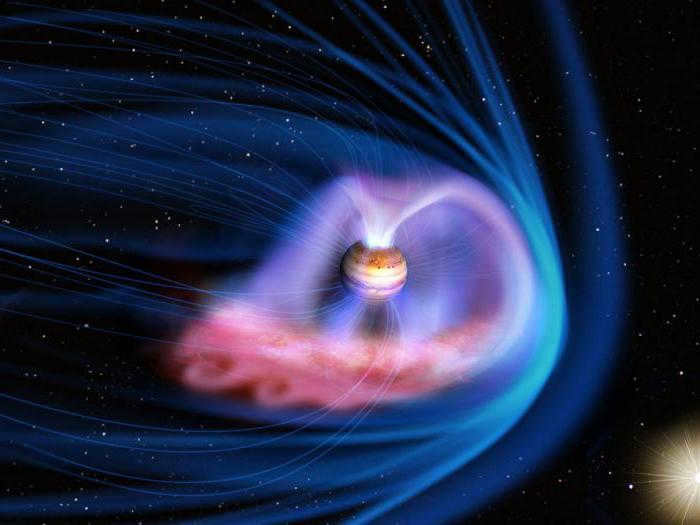
Deadly radiation
Jupiter’s magnetic field acts as a powerful magnet, attracting and trapping ions, protons, and plasma particles. These charged elements primarily come from solar winds, the Galilean moons, and volcanic emissions from Jupiter’s moon Io.
These micro-particles travel at tremendous speeds and generate breathtaking auroras at the planet’s poles. While the auroras themselves are a regular occurrence, their intensity can vary. The permanent auroras on Jupiter are hundreds of times brighter than the temporary auroras observed on Earth.
However, there is a dark side to this beauty. The particles that become trapped in Jupiter’s magnetic field form radiation belts, which pose a significant threat to any form of life. The levels of radiation on Jupiter are 25 times more lethal to humans compared to those on Earth. As a result, sustaining life on Jupiter is impossible, and its radiation is considered the most hazardous in the entire solar system.
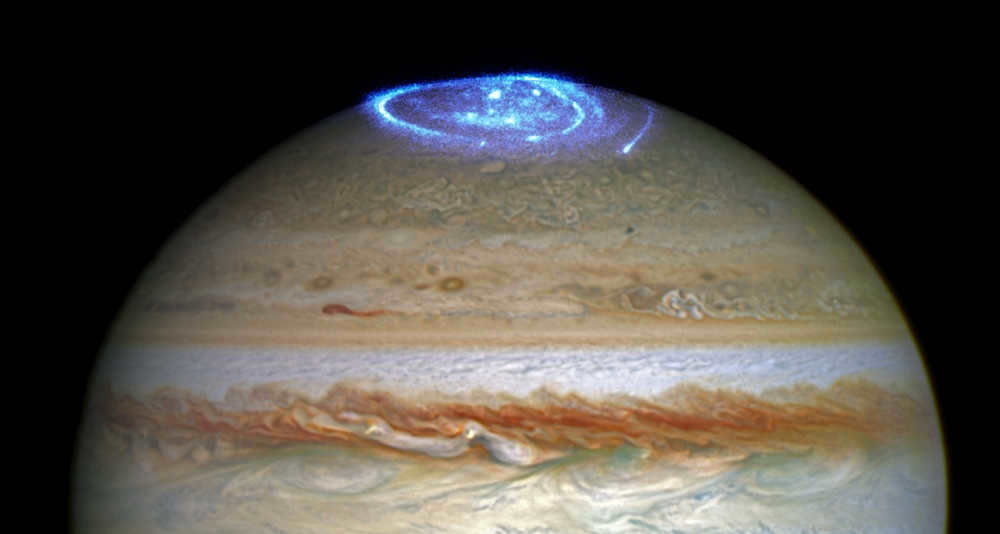
Planet’s Atmospheric Conditions
Jupiter’s atmosphere is unique due to its cyclones, storms, lightning, high pressure, and the risks associated with space travel to the planet. Storms can cover thousands of kilometers in just a few hours, with winds swirling clouds and creating cyclones at speeds of up to 380 kilometers per hour. These storms are not short-lived, but rather can last for years in the planetary atmosphere.
The clouds that envelop Jupiter have varying compositions, colors, and densities. The highest level clouds, for example, contain ammonia crystals, which contribute to their light coloration.
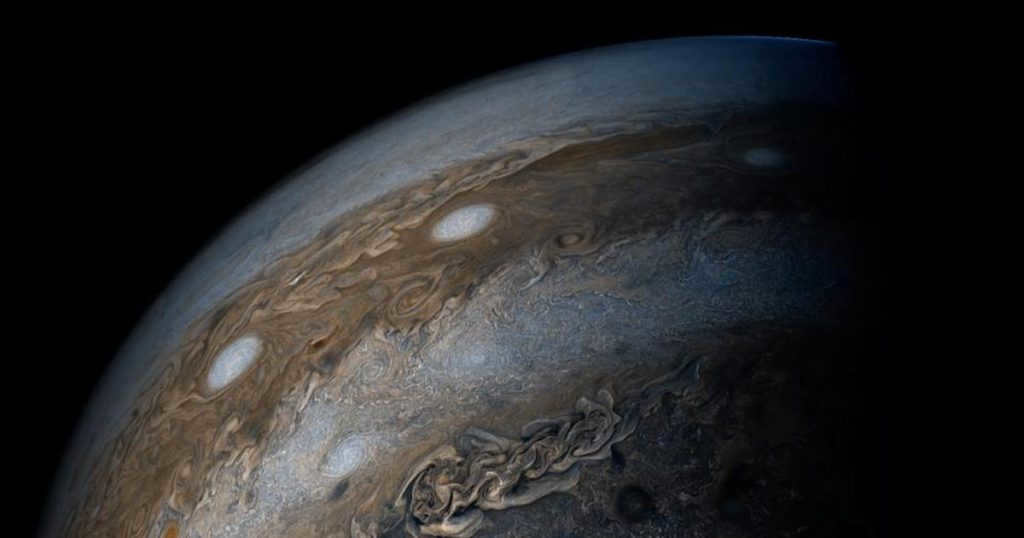
The clouds beneath consist of particles of ammonium hydrosulfide. These clouds possess a greater temperature, greater density, and exhibit a darker hue. They shape the gas giant’s zones and bands, which are influenced by the direction of the wind. The cloud layer extends 50 kilometers into the planet.
The clash of opposing wind currents produces storms and areas of heightened turbulence. Vortex phenomena are accompanied by vivid bursts of lightning.
Jupiter’s Rings
In 1979, the discovery of rings surrounding Jupiter was made. The Soviet scientist Sergei Vsekhsviatsky was the first to propose the existence of these rings. He attributed the rings’ origin to the volcanic thermal activity of Jupiter’s moon, Io, and its emissions.
The rings consist mainly of microparticles, primarily dust subparticles measuring one micron in size. This composition makes it challenging to observe the rings visually.
Another theory suggests that the rings formed from the collisions between asteroids and comets. The particles from these celestial bodies were captured by Jupiter’s powerful magnetic field. In total, Jupiter is encircled by four rings.
Jupiter, the largest planet in the solar system, stands out among the eight planets for its immense size, mass, rotational speed, and level of danger. This majestic giant boasts the strongest magnetic field of all the planets and is also home to the largest number of satellites.
Unfortunately, Jupiter’s unforgiving atmosphere and treacherous vortices make it difficult for spacecraft to uncover its secrets. Despite these challenges, scientists remain dedicated to studying Jupiter in order to unlock the mysteries surrounding its formation and existence as a planetary titan.
Did You Know?
- The earliest mentions of Jupiter can be traced back to the 7th-8th centuries BC. The ancient Babylonians were the first to incorporate the planet into their culture.
- The massive celestial body acquired its current name as a tribute to the supreme deity and father of all gods in the ancient Roman pantheon. The closest equivalent in Greek mythology is the thunder god Zeus, which led to the planet being referred to as the “radiant” and “brilliant” star of Zeus. Pagan Germanic tribes associated the planet with the god Donar, also known as Thor in Scandinavian mythology.
- In the scientific community, there has been a long-standing hypothesis regarding the existence of an unidentified planet located between Mars and Jupiter. At present, this gap is occupied by a cluster of asteroids, which are remnants of a previously existing planet.
- Due to its rapid rotation, titanium has acquired a slightly flattened shape. As a result of this fast rotation, the planet has the shortest day length among all the planets in the solar system, lasting only 9 hours and 50 minutes.
- Jupiter takes approximately 4,332,589 days to complete one revolution around the sun. This means that a Jupiterian year is equivalent to 11.86 Earth years. Furthermore, to travel from one constellation to another, this giant planet would require several months. When observed from Earth, Jupiter’s speed appears to be extremely slow, considering its distance of 775.55 million kilometers from our planet.
- There are currently 79 known and discovered objects orbiting Jupiter as of 2018.
- Jupiter, being the fourth brightest celestial body in the solar system, has been recognized since ancient times. However, the Sun, Moon, and Venus still outshine this gas giant.
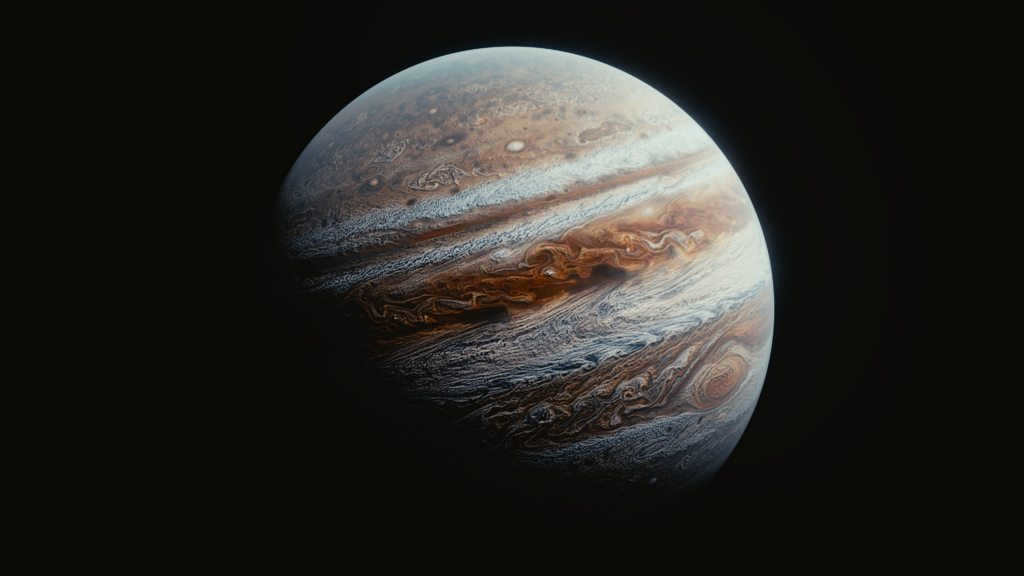
Jupiter remains one of the most enigmatic celestial bodies in our solar system, with many of its characteristics still shrouded in mystery, including the makeup of its core. As the largest planet in our solar system, Jupiter’s immense size has captivated scientists since the time of Galileo Galilei, leading to continued exploration and study. New-science.ru has compiled a list of 10 intriguing facts about this formidable planet that you may not be familiar with.
Jupiter holds the title of being the biggest planet within our solar system.
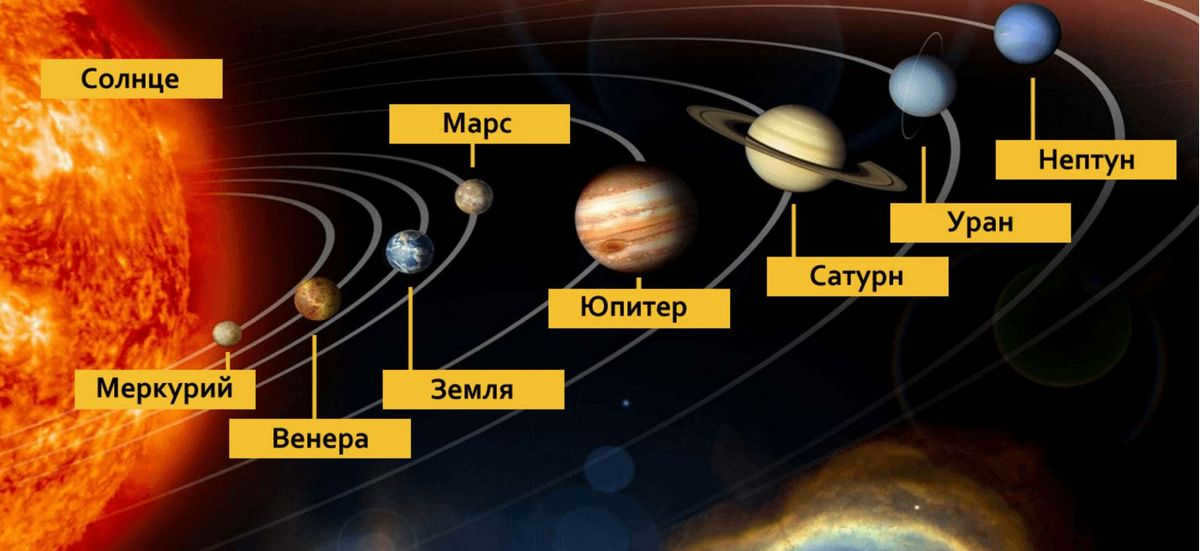

Jupiter is positioned as the 5th planet from the Sun and stands out as the largest celestial body among the collection of 8 planets within our solar system. Its colossal dimensions are accompanied by a remarkable mass, surpassing the combined weight of all other planetary bodies by a factor of 2.5. When juxtaposed against the grandeur of Jupiter, our Earth appears minuscule, akin to a mere marble, and pales in comparison as it is 318 times lighter than its gargantuan neighbor.
In its current state, Jupiter’s size and mass harmoniously coexist. Researchers speculate that any further increase in the planet’s mass would result in a reduction in its physical volume, as the augmented gravitational force exerted would compress the planet. Consequently, this intensified gravitational pull would lead to an increase in density, enabling a greater amount of matter to be accommodated within a given space.
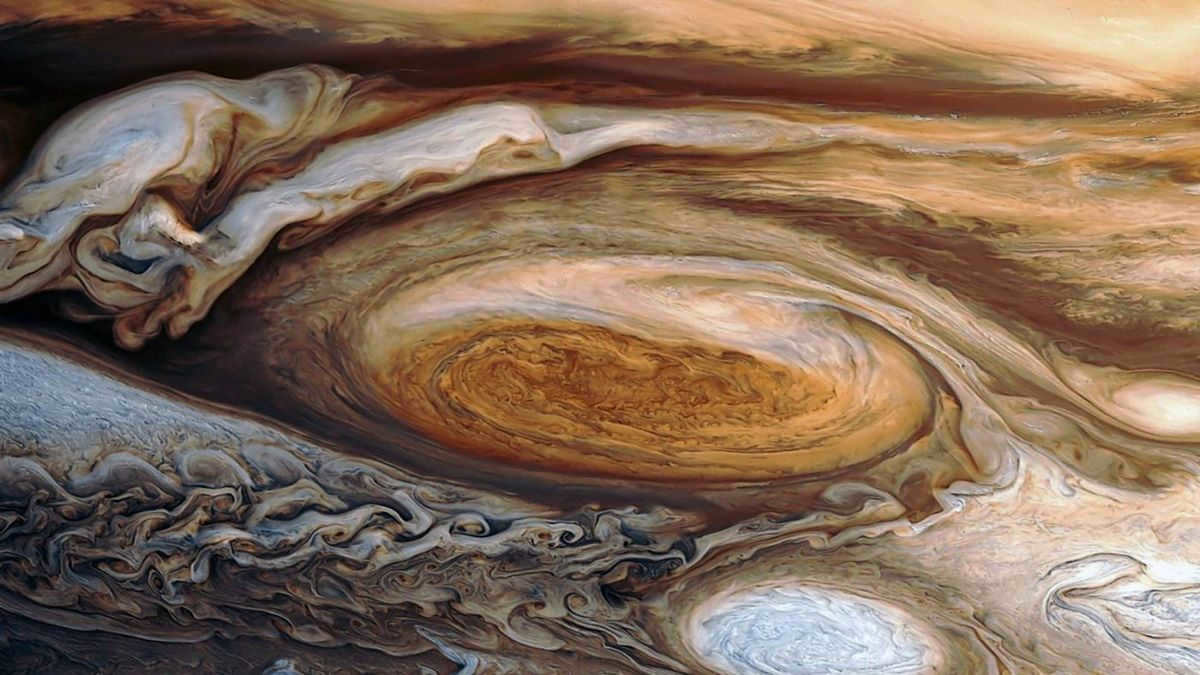
Jupiter’s outer layer is adorned with incredibly stunning clouds consisting of gas and dust. These clouds race across the planet’s surface, fueled by intense storms. The thickness of the clouds may differ from one region to another, but on average, they span 50 kilometers.
Among the many awe-inspiring features on Jupiter’s outer layer, one stands out—the Great Red Spot. This mesmerizing storm takes the form of an anticyclonic system situated south of Jupiter’s equator. Spanning a colossal 24,000 kilometers in diameter, the Great Red Spot was first observed in 1665. While it has since decreased in size, it remains large enough to effortlessly contain three Earths.
Jupiter’s rotation is faster than that of any other planet in the solar system
Jupiter boasts an exceptionally high rotational velocity compared to other celestial bodies in our solar system. It completes one full rotation in just 10 hours, resulting in a staggering speed of 50,000 kilometers per hour. In contrast, our home planet Earth takes a full 24 hours to complete a single rotation. Due to its status as a gas giant, Jupiter’s rotational speed varies slightly between its equator and its poles. The poles rotate marginally slower than the equator, with a difference of only 6 minutes. The rapid rotation of Jupiter causes its equator to bulge outward and align with the poles.
The magnetic field of Jupiter is incredibly powerful
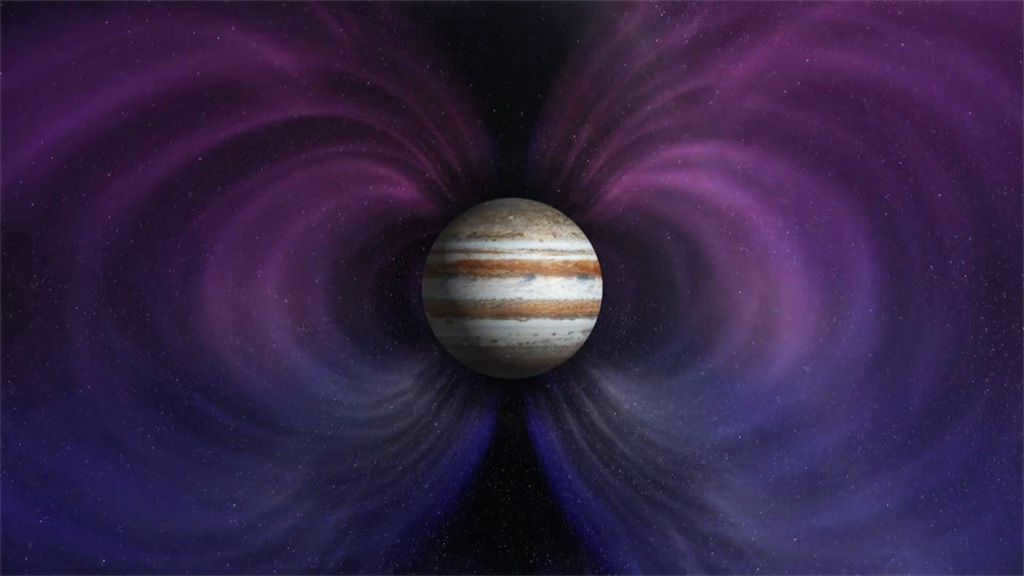
Jupiter holds the top position among all the planets when it comes to the strength of its magnetic field. In fact, its magnetic field is approximately 20,000 times more powerful than that of Earth. This powerful magnetic field plays a crucial role in protecting both Jupiter and its satellites from the harmful effects of solar winds. By deflecting the electrically charged particles in the solar winds towards space and its poles, Jupiter’s magnetic field acts as a shield. The intensity of the deflected radiation is so high that even NASA’s highly shielded spacecraft are unable to withstand it. Moreover, the reach of Jupiter’s strong magnetic field extends up to 3 million kilometers towards the Sun and over 1 billion kilometers in the opposite direction, significantly expanding the reach of its magnetosphere.
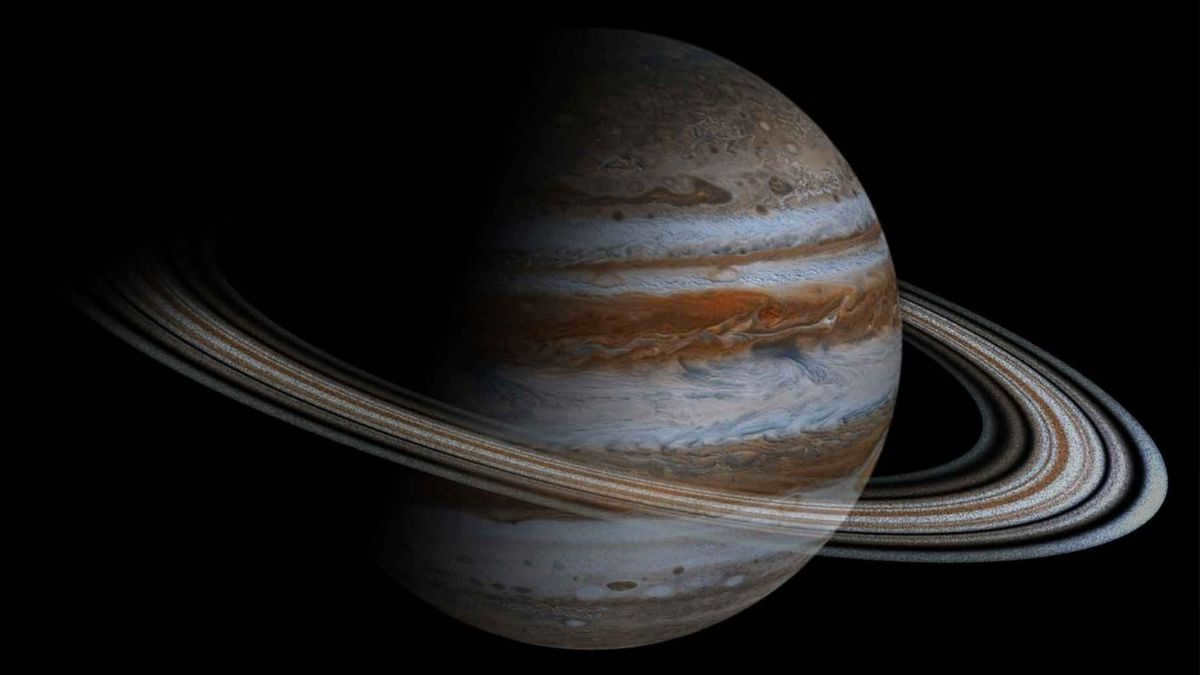
Many individuals mistakenly believe that Saturn is the only planet with rings. However, in 1979, scientists were astonished to discover from photographs taken by Voyager I that Jupiter also possesses rings around its equator! These rings are incredibly faint, making them extremely challenging to observe using telescopes here on Earth. The primary ring encircling Jupiter’s equator measures approximately 6 kilometers in width and 30 kilometers in thickness.
The halo, a cloud-like ring within Jupiter, spans approximately 20,000 kilometers and is actively influenced by Jupiter’s magnetic field. Composed primarily of dark particles, Jupiter’s inner ring possesses a distinctive appearance. The transparent 3rd ring, on the other hand, is comprised of three distinct bands. These bands consist primarily of dust particles measuring 10 micrometers in diameter. The creation of rings encircling Saturn and Jupiter can be attributed to the impact of asteroids and comets. Upon entering the orbits of Saturn and Jupiter, these celestial bodies disintegrate into smaller particles.
Jupiter’s 79 moons

The Carnegie Institution for Science has reported the discovery of twelve new satellites on July 17, 2018, bringing the total number of known satellites of Jupiter to 79. While this is an impressive number, there are only four main satellites, also known as the Galilean satellites: Ganymede, Europa, Io, and Callisto.
Ganymede holds the title of the largest satellite of Jupiter, followed by Titan as the second largest. Callisto takes the third spot as the largest satellite and is known as the most heavily cratered object in our solar system. With a diameter of 5000 kilometers, Callisto is nearly the same size as the planet Mercury.
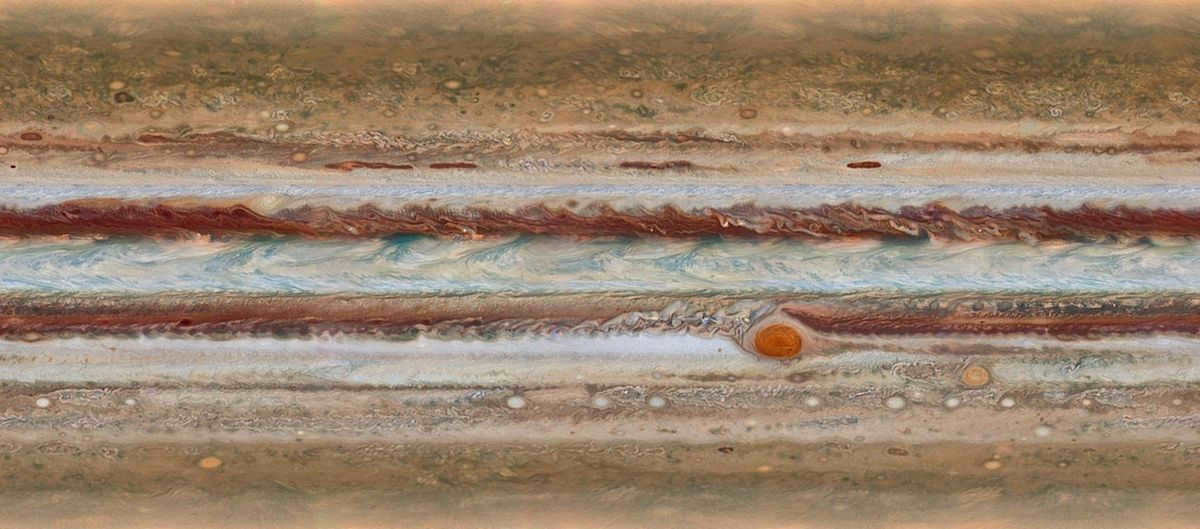
Jupiter’s atmosphere is primarily made up of hydrogen and helium, with small amounts of other gases. Hydrogen comprises the majority of the atmosphere, accounting for 89%, while helium makes up 10%. The high concentration of hydrogen is similar to that of the Sun, giving Jupiter the potential to become a star. However, due to its insufficient mass, Jupiter was unable to undergo nuclear fusion in its core and ignite as a star. To initiate a fusion reaction, Jupiter would have required approximately 80 times its current mass.
Jupiter is composed predominantly of gaseous materials and lacks a solid surface suitable for spacecraft landings. However, there is speculation among scientists that a solid core may exist within Jupiter, surrounded by metallic hydrogen.
Jupiter serves as a guardian for the other planets
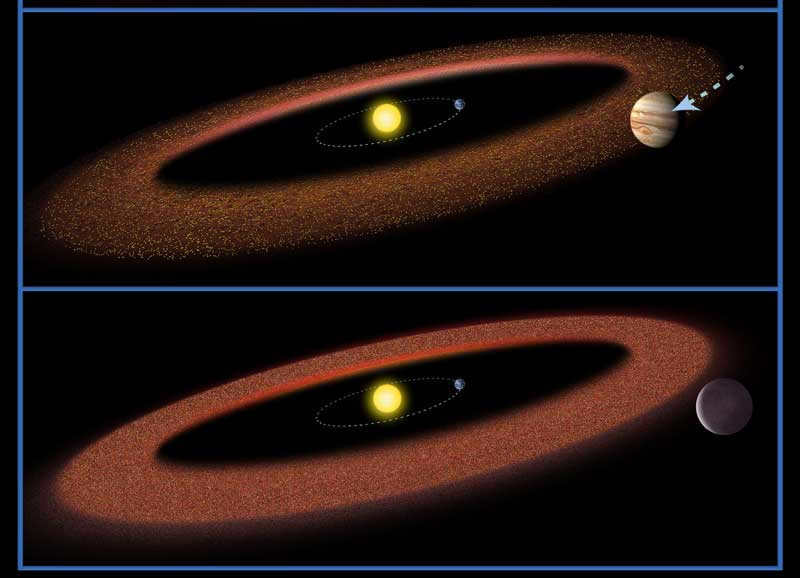
Jupiter is more than twice as heavy as all the other planets combined and ranks as the second largest celestial body after the Sun. Due to its immense mass, Jupiter possesses a powerful gravitational field, which many scientists speculate contributed to the formation of the solar system. A publication in the scientific journal Science unveiled an article that disclosed the involvement of Jupiter, along with two other gas giants, Saturn and Neptune, in deflecting space debris and safeguarding the inner planets. Jupiter continues to play a vital role in diverting certain asteroids from the inner planets. This is because Jupiter exerts a significant influence on numerous asteroids, known as Trojan asteroids, that have strayed into the solar system.
Jupiter and Earth possess cores of nearly identical size
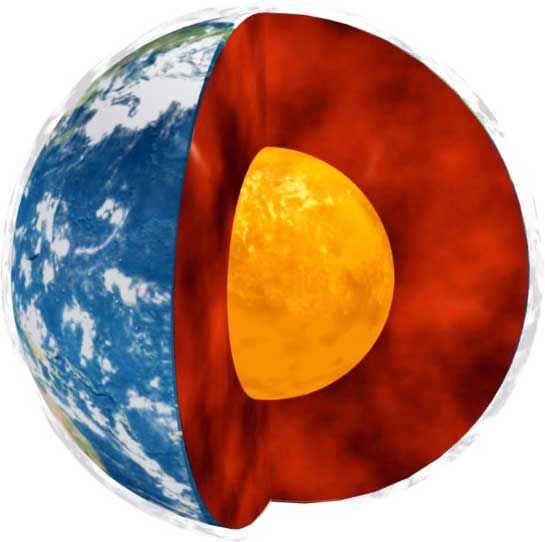
The core of Jupiter is a subject of great mystery and has sparked numerous theories regarding its composition. Scientists speculate that the core of Jupiter is approximately one-tenth the size of Earth and is primarily composed of metallic hydrogen. Earth, with a diameter of 13,000 kilometers, would have a core that is 10 times smaller, measuring about 1,300 kilometers. Hence, the diameter of Jupiter’s core is roughly equivalent to that of Earth’s inner core, which measures 1,220 kilometers in diameter.
Missions to explore the vastness of Jupiter
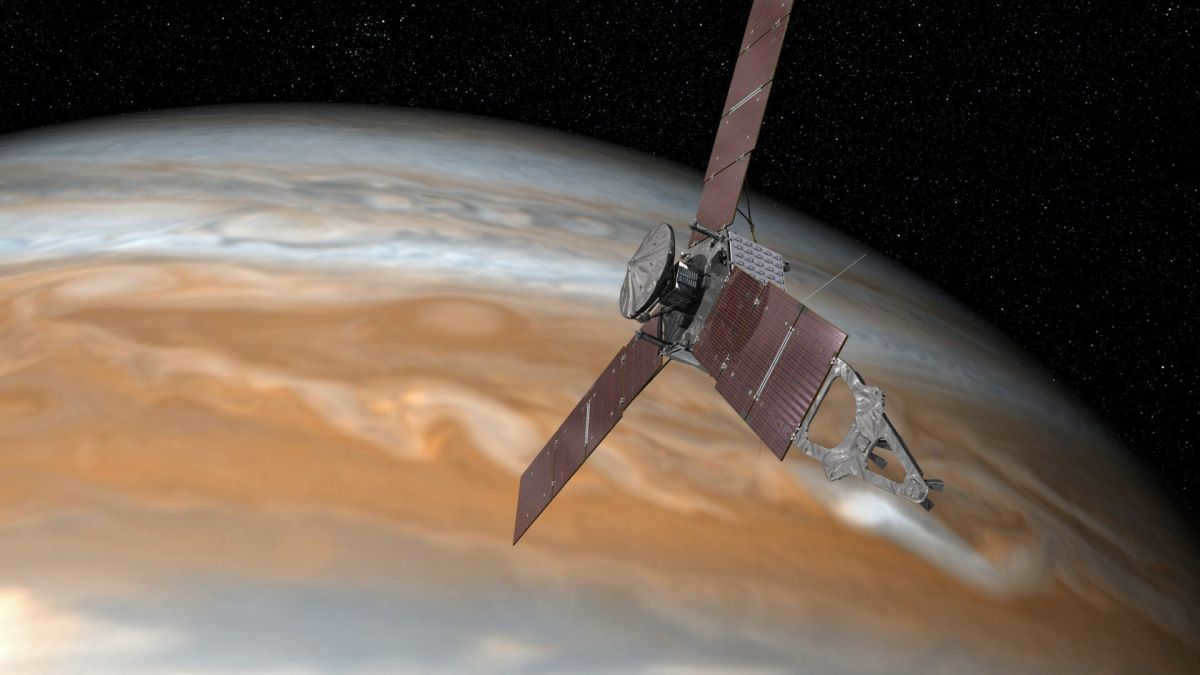
Jupiter is a celestial body that has ignited the curiosity of numerous scientists, prompting them to conduct extensive research on it. In the past, the study of Jupiter was limited to observations made through large ground-based telescopes. However, with the advent of powerful rockets and technological advancements, several spacecraft were launched with the primary objective of studying Jupiter. It is noteworthy that these spacecraft were primarily focused on exploring Jupiter during their respective missions, which varied in nature.
Below is a compilation of these spacecraft:
- Pioneer 10
- Pioneer 11
- Voyager I and II
- Galileo Probe
- Ulysses
- Cassini-Huygens
- New Horizons
- Juno
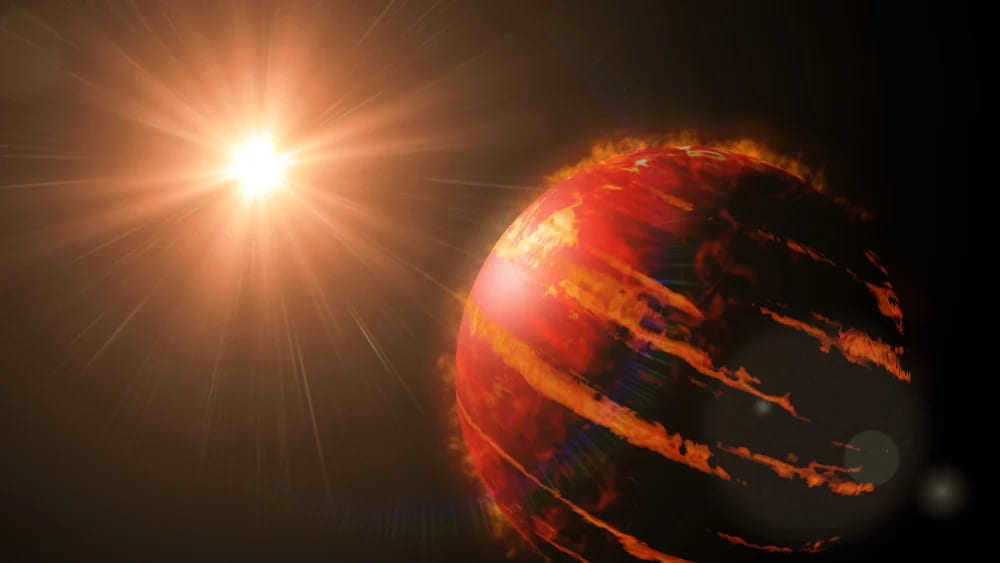
Scientists have made an interesting discovery while studying planets beyond our solar system.
Jupiter is easily recognizable as one of the most prominent planets in our solar system. Its position as the largest and third brightest object in the night sky has allowed us to gather a wealth of information about its properties and characteristics.
However, Jupiter is only found within our own solar system. Is it possible for other star systems to have planets similar to Jupiter?
In our quest to find exoplanets, astronomers have classified a group known as gas giants. These exoplanets are similar in size to Jupiter or Saturn. However, within this classification, there is a specific subset known as “hot Jupiters.”
So what exactly qualifies as a hot Jupiter?
Introduction to hot Jupiters
Hot Jupiters, as their name suggests, are gas giants similar to Jupiter that have extremely close orbits around their parent stars. Their proximity is such that their orbital radius is typically around 0.1 astronomical units (AU), whereas the average distance between the Sun and Mercury is 0.4 AU.
Hot Jupiters were the first type of exoplanets to be detected by astronomers. In 1995, Swiss astronomers Michel Mayor and Didier Queloz discovered a gas giant orbiting a star similar to the Sun, known as 51 Pegasus. Their groundbreaking discovery earned them the Nobel Prize in Physics in 2019.
Through their observations, Mayor and Queloz determined that this hot Jupiter has a short orbital period of approximately 4.2 days. As of 2020, the majority of exoplanets discovered using ground-based surveys, such as WASP and HATNet, have been classified as hot Jupiters.
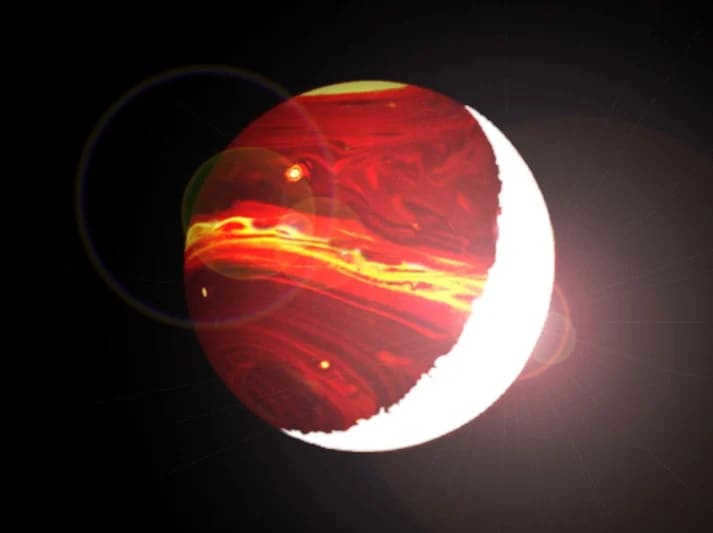
Out of all the hot Jupiters that have been found so far, approximately six have orbital periods of under one day. These particular planets are known as ultra-short period (USP) hot Jupiters. In a study published in 2020, scientists reported the discovery of the USP hot Jupiter with the shortest orbital period. This particular planet is named NGTS-10 b and it has an orbital period of 0.77 days, which is roughly equivalent to 18 hours!
Surface temperature
The close proximity of a hot Jupiter to its host star is responsible for its unusually high temperatures. A notable characteristic of hot Jupiters is their tidally locked nature, where one side is always facing the host star while the other side remains in constant darkness.
Through observations made by the Spitzer Space Telescope, it has been discovered that hot Jupiters with slightly cooler atmospheres can still reach temperatures as high as 700 degrees Celsius. On the other hand, hotter versions of these gas giants can have atmospheric temperatures ranging from 700 to 1,700 degrees Celsius.
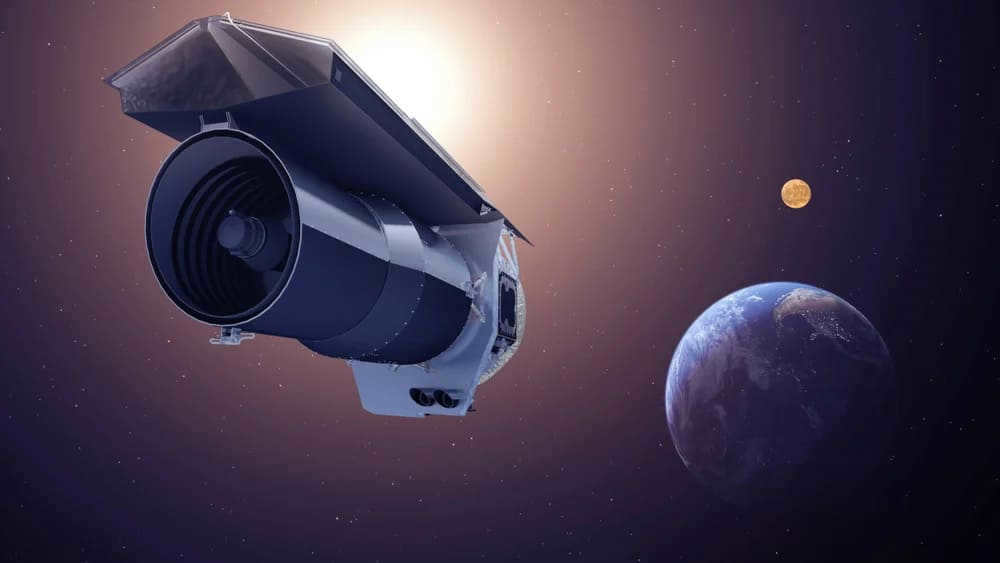
Nevertheless, there exists a particular type of hot Jupiters called ultra-hot Jupiters (UHJs), which boast even higher temperatures. These exoplanets orbit their host stars at close proximity, resulting in scorching daytime temperatures exceeding 2,200 Kelvin, equivalent to just above 2,000 degrees Celsius (this characteristic is also what distinguishes them as UHJs).
Such an extreme environment leads to the dissociation of certain molecules, including water molecules (H2O), within their atmospheres. In fact, in 2021, scientists were able to detect spectra of dissociated water molecules on the UHJ known as WASP-76b, thus confirming their presence within the exoplanet’s atmosphere. This breakthrough paves the way for future studies on the atmospheres of other UHJs, particularly focusing on molecular dissociations, in order to gain a deeper understanding of their unique properties.
It is quite remarkable that all hot Jupiters exhibit the same nighttime temperature, despite variations in their atmospheres, planetary characteristics, and rotational periods. One would expect these factors to influence the temperature distribution on these exoplanets. However, it has been consistently observed that the nighttime temperature of hot Jupiters hovers around 1100 Kelvin.
Nonetheless, there may be a plausible explanation for this intriguing phenomenon. The current models employed in this research assume an atmosphere devoid of clouds. Unfortunately, simulating cloud formations presents a complex and computationally demanding challenge. Hot Jupiters with more extreme atmospheric conditions are likely to possess intricate cloud structures. Thankfully, upcoming telescopes like the James Webb Space Telescope and the European Space Agency’s ARIEL will enable scientists to study and characterize the cloud formations on the night side of these exoplanets with relative ease.
One interesting feature of hot Jupiters is that a portion of them (approximately 25% of all known hot Jupiters) seem to have retrograde orbits around their host star. This implies that the planet’s orbit around its parent star and the star’s rotation are moving in opposite directions. In our own solar system, none of the planets have retrograde orbits, and the same holds true for other exoplanets.
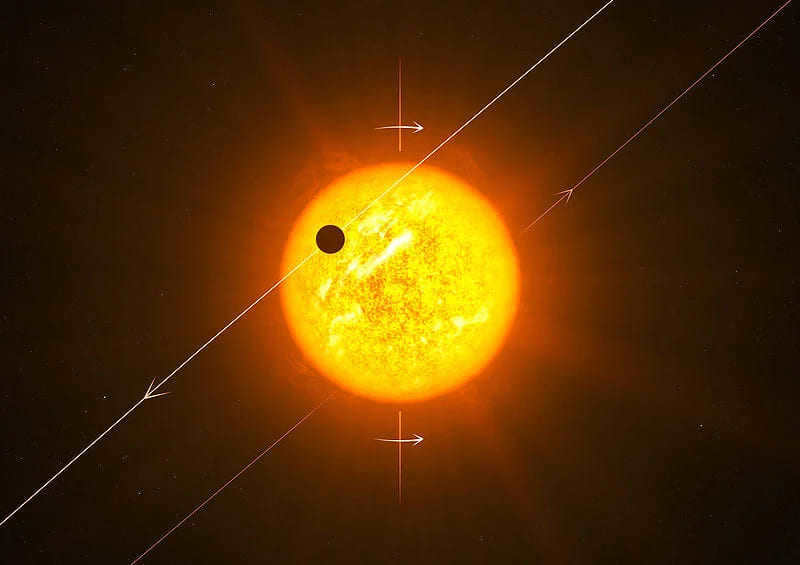
Finally, we have reached the point where we discuss the eccentricity of the orbits of planets. This parameter determines whether the orbit is more circular or elliptical in shape. A value of 0 for eccentricity indicates a perfectly circular orbit, while a value between 0 and 1 (excluding both numbers) suggests an elliptical orbit. The eccentricities of the planetary orbits hold clues about their origins and formation.
When it comes to Hot Jupiters with orbital periods of up to 3 days, their orbits tend to be more circular in nature. This is because their short periods can result in non-elliptical orbits, thanks to a phenomenon known as fast tidal circulation.
Tidal circulation refers to the phenomenon of tidal forces acting between a primary object (like a star) and a secondary object (like a planet) that orbits around it. These tidal forces cause the secondary object’s orbit to gradually become more circular over time. This effect is especially pronounced in hot Jupiters with orbital periods of three days or less.
However, for hot Jupiters with orbital periods ranging from three to ten days, some of them display elliptical orbits. This can be attributed to a process known as high eccentricity tidal migration.
Following the creation of exoplanets within a stellar system, it is possible that an additional immense planet influenced the hot Jupiter to adopt a highly eccentric (or elliptical) orbit. Over time, the eccentricity of this hot Jupiter’s orbit would have diminished due to tidal effects (such as tidal circulation), ultimately resulting in a moderately elliptical orbit around the central star. However, not all hot Jupiters with orbital periods of 3-10 days exhibit elliptical orbits; some possess circular orbits as well.
Hot Jupiters represent one of the most peculiar types of exoplanets. They also happen to be among the easiest to observe using Doppler techniques. It is crucial to strive towards comprehending their physical and orbital characteristics, as well as their interactions with their host stars. Doing so will aid in enhancing our understanding of the theories surrounding planet and star formation.





